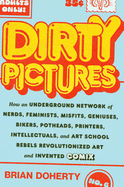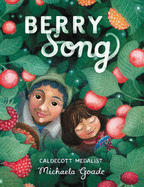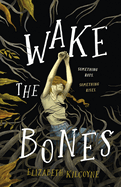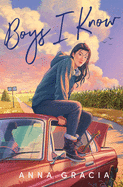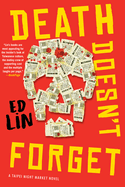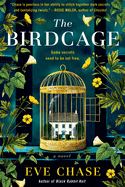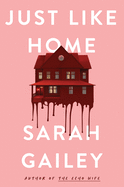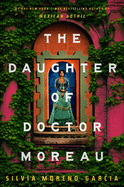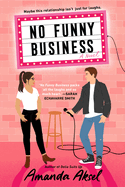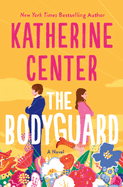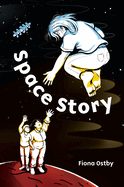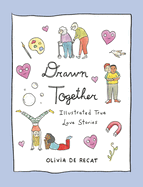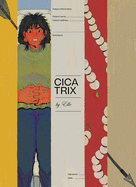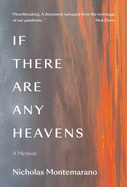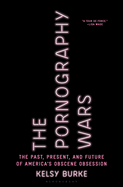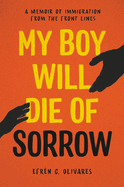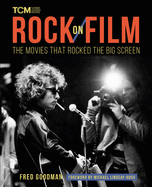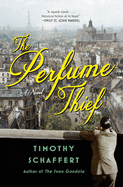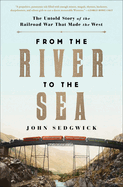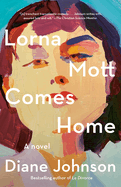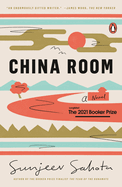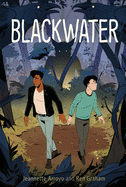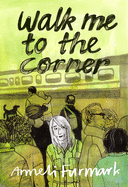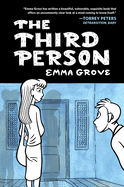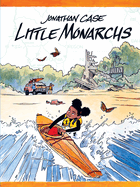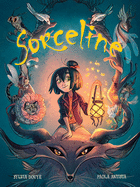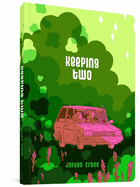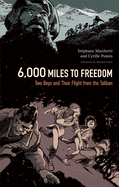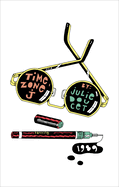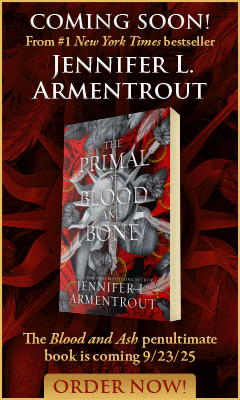Week of Friday, July 22, 2022
Welcome to our Comics & Graphic Novels issue! Among the books reviewed this week: Brian Doherty's Dirty Pictures: How an Underground Network of Nerds, Feminists, Misfits, Geniuses, Bikers, Potheads, Printers, Intellectuals, and Art School Rebels Revolutionized Art and Invented Comix--the subtitle says it all: "an indispensable history" for any fan; and Luke Healy's sharp, skilled The Con Artists, a "wow-inducing example of show-don't-tell genius."
Plus, our feature spotlights more outstanding comics & graphic novels we reviewed in Shelf Awareness earlier this year.
Death Doesn't Forget
by Ed Lin
Though Death Doesn't Forget is the fourth in the Taipei Night Market series, versatile novelist Ed Lin nimbly ensures each volume could easily stand alone. Of course, the recommended route is to read the titles in order--Ghost Month; Incensed; 99 Ways to Die--to further appreciate Lin's insightful backgrounds for his multilayered recurring characters.
Jing-nan's meat, veggie and just-added donut skewers are undoubtedly some of the tastiest fare available in Taiwan's renowned Shilin Night Market. Running his family's food stall, Unknown Pleasures (named for a Joy Division album!), was never Jing-nan's dream, but onerous circumstances demanded he abandon his UCLA degree and return home. At 25, he's settled in with Dwayne and Frankie, two of the most loyal workers (and reliable friends) he could hope to find. As delicious as the menu is, however, what attracts customers in droves is Jing-nan's notorious propensity to be in the wrong place at the wrong time--and somehow getting linked to murder. This time he's being questioned for the brutal deaths of his sort-of (but not quite) father-in-law and a cranky cop who's had a personal vendetta against Jing-nan. No doubt he's innocent, which means he's going to have to find whodunnit.
"When high-profile crimes were solved, there did seem to be a high number of coincidences," Jing-nan muses near the mystery's end. Indeed, Lin's signature rollicking mixture of wink-wink noir and impossible fortuity is again on full display, balancing just enough chill with plenty of thrill. Murder is never funny, but at least a chuckle here and a guffaw there can't hurt the corpses. --Terry Hong, Smithsonian BookDragon
Discover: Ed Lin deftly continues his savory Taipei Night Market series, placing his four-book hero innocently back among the mysteriously murdered.
The Birdcage
by Eve Chase
The complex dynamics that fuel sisterly love but ignite rivalry set the emotional tone for British author Eve Chase's irresistibly suspenseful drama, The Birdcage. Featuring a rugged English coastal setting, Chase's fourth novel explores the corrosive effect of the long-ago secrets and betrayals of three half-sisters who share the same father, a prominent artist named Charlie Finch. Flora, Kat and Lauren grew up spending summers at Rock Point, the Finch family's Cornwall villa overlooking the Atlantic Ocean. But the horror of a deadly accident on the property during an August afternoon in 1999 ended that annual ritual, and they haven't been back since.
The Birdcage opens during a wintry January snowstorm 20 years later. The sisters are summoned to Cornwall by Charlie with the promise of an important announcement. As Flora, Kat and Lauren reluctantly return to their childhood summer home, each reliving her role in that decades-old accident, the ominous presence of a mysterious man with a black dog and the ramblings of their late grandmother's geriatric parrot, Bertha, deepen the mystery of the sisters' dark past.
Chase (The Wildling Sisters) navigates the relationships Flora, Kat and Lauren have with each other and with their father with masterful strokes, offering enticing, layered glimpses into their early years. At the same time, the rising tension in the present, inflamed by the shock of Charlie's announcement, boils over during the course of one particularly stormy night. The eerie, ethereal imagery in The Birdcage--named (in part) for the painting that critics consider Charlie Finch's "masterpiece"--will linger with readers long after they part ways with the Finch family. --Shahina Piyarali, reviewer
Discover: In this richly rendered, thrilling drama, the daughters of a famous British painter return to their childhood summer home in Cornwall, a house haunted by past traumas.
Science Fiction & Fantasy
Just Like Home
by Sarah Gailey
Just Like Home by Sarah Gailey (The Echo Wife; Upright Women Wanted; Magic for Liars) is a blood-soaked psychological thriller crafted to keep readers up at night. Vera Crowder, daughter of infamous serial killer Francis Crowder, has been called back to her childhood home--and the site of her father's brutal murders--by her dying mother, Daphne. And while Vera anticipated the challenge of dealing with her estranged mother, what she finds is much worse. An opportunistic artist has moved into the house, intent on exploiting its sordid history, and an uncannily familiar dark force lurks in the house's corners. Soon it becomes clear that no matter where Vera goes, the Crowder House will always call her back.
Gailey's patient plotting carefully constructs a complex and twisted family dynamic, both in the past and the present, among Vera, Daphne and Francis. These relationships ultimately form the core of the novel, as Vera balances on a knife's edge between pragmatic emotionlessness and a descent into the terror and apprehension her parents wrought. While the shudder-inducing family dynamic--defined by scenes such as Francis giving Vera "the talk" while gutting a fish--undergirds the novel, Gailey's strong attention to atmospheric details gives it a true gothic horror flare. It's the details--from the sticky-sweet taste of lemonade to the slick, inescapable sensation of grease--that will viscerally disturb readers, and are guaranteed to take up residence in their minds and refuse to leave. --Alice Martin, freelance writer and editor
Discover: An intoxicatingly disturbing horror-thriller, Just Like Home offers in even strokes nightmarish images, thoughtful plotting and an unsettling portrait of family.
The Daughter of Doctor Moreau
by Silvia Moreno-Garcia
A remote community of outcasts, human and otherwise, is upended by the arrival of a young nobleman in The Daughter of Doctor Moreau, the lush, anti-imperialist reimagining of The Island of Doctor Moreau by Silvia Moreno-Garcia (Velvet Was the Night; Mexican Gothic).
Montgomery Laughton comes to Yaxaktun, Doctor Moreau's isolated estate in Mexico's Yucatán peninsula, to take a job as its mayordomo and as the latest step in his aimless journey to escape his past. He discovers that, apart from the doctor, Yaxaktun is populated by his devoted daughter, Carlota, and the hybrids, combinations of humans and animals created by Moreau's experiments. His patron, Hernando Lizalde, hopes that Moreau will produce hybrids for labor on his ranch to replace the locals he finds too rebellious. For six years the experiments continue, Laughton works for Moreau and Carlota matures. Then Lizalde becomes impatient with Moreau's progress and his son Eduardo encounters Carlota, setting off a chain of events that will change everything.
Moreno-Garcia's tale unfolds slowly, with little in the way of action until after the jump in time. But the setting of the stage at the wild, beautiful estate and the careful parceling out of the central characters' secrets is essential to establishing the gothic tone at the heart of the novel and showing readers how Carlota could easily become either her father's successor or his downfall. Fans of classic science fiction adventure, gothic suspense and fairy-tale reinterpretations, such as Naomi Novik's Uprooted, will find much to admire here. --Kristen Allen-Vogel, information services librarian at Dayton Metro Library
Discover: A revisiting of H.G. Wells's classic science fiction novel offers a rich, gothic morality tale about hubris and colonial exploitation.
Romance
No Funny Business
by Amanda Aksel
Amanda Aksel (Delia Suits Up; The Commitment Test) presents a charming and comedic romance in No Funny Business. Brimming with sexy hilarity, this is the perfect romance for fans of stand-up comedy or anyone looking for a funny love story with some depth.
Olivia Vincent has always wanted to be a stand-up comedian, but at her father's urging she got a law degree so that she'd have a guaranteed "real job." For the last few years, she's been appearing in court by day and grabbing a mic by night, but she's starting to burn out. When she loses her job at a Manhattan law firm, she takes it as a sign to pursue stand-up full time. And her agent has the perfect gig: a cross-country comedy tour with the very sexy Nick Leto. But her agent makes Olivia promise to avoid any funny business with Nick on the road trip from New York to Los Angeles.
As Nick and Olivia travel across the country, odd circumstances force Olivia to come to terms with her issues with her father and make Nick reevaluate his own past. Stuck in the car for endless hours, Olivia and Nick get to know each other really well. And Olivia finds herself wondering what would happen if she breaks the rule her agent set for her. Heartfelt and hilarious, with Nick and Olivia facing everything from angry widows to Elvis impersonators, No Funny Business is actually very funny stuff. --Jessica Howard, freelance book reviewer
Discover: Two stand-up comedians are thrown together on a cross-country road trip in this clever and hilarious romance.
The Bodyguard
by Katherine Center
Hannah Brooks is great at her job, which involves providing discreet private security for wealthy clients. But as she's reeling from her mother's death and a breakup, she gets an unconventional, totally non-discreet assignment: protecting actor Jack Stapleton from a middle-aged stalker by posing as his girlfriend. The Bodyguard, Katherine Center's warmhearted, witty ninth novel, follows Hannah and Jack as their romance goes from completely fake to maybe something real, and traces Hannah's inner journey as she begins to process her losses and move forward.
Center (What You Wish For; Things You Save in a Fire) creates a smart, hilarious narrator in Hannah, whose wry sense of humor is her prime coping mechanism. While her colleagues (gal pal Taylor; fangirl Kelly; tough-guy boss Glenn) seem at first like stereotypes, they (mostly) show their human sides later in the novel. Ditto for Jack Stapleton, rom-com hero: he's naturally adept at showing a practiced public face, but their forced closeness means Hannah gets to see the real Jack, whether it's his habit of leaving his dirty laundry all over the floor or his unresolved grief after the death of his younger brother. As they spend time at Jack's parents' ranch outside Houston, Hannah finds herself falling for both Jack and his family, all while reminding herself that this new life is temporary. Or is it?
With a breezy narrative style and a charming Texas setting, Center's novel will capture readers with its wit, insight and surprising ending. --Katie Noah Gibson, blogger at Cakes, Tea and Dreams
Discover: Katherine Center's warm and witty ninth novel combines a slow-burning romance with an unconventional fake-dating scenario.
Graphic Books
Dirty Pictures: How an Underground Network of Nerds, Feminists, Misfits, Geniuses, Bikers, Potheads, Printers, Intellectuals, and Art School Rebels Revolutionized Art and Invented Comix
by Brian Doherty
When artists working in a fringy form achieve a level of mass acceptance, have they necessarily sold out? Brian Doherty touches on this timeless art-scene question, among others, in his dense, diligent and, for any comix fan, indispensable history, Dirty Pictures.
As Doherty tells it, the repressive 1950s begat underground comix, whose practitioners often had a toe in the hippie, biker, rock and/or drug scenes of the 1960s. (The "x" in "comix," explains Doherty, marks the form as "distinct from the mainstream comics to which they were in opposition.") Comix had their glory days in the early 1970s, followed by a slump that resulted from, among other foils, distribution problems, legal challenges (for obscenity and copyright infringement) and the public's fickle taste.
Doherty (Radicals for Capitalism) gives Dirty Pictures the feel of an oral history through generous excerpts from his interviews with pioneers in the comix field. Among his best-known interviewees are "founding father" Robert Crumb, Alison Bechdel and Art Spiegelman. Spiegelman's Maus, which began in the pages of comix magazine Raw, went on to win a Pulitzer Prize in 1992 and made "graphic novel" a household term (for better or, in the eyes of some comix devotees, worse). Meanwhile, lesser-sung cartoonists slog on, finding--as Doherty puts it--"the will to keep going when the law, good sense, or their bank accounts might have told them to stop." --Nell Beram, author and freelance writer
Discover: Brian Doherty's history of underground comix is dense, diligent and--for any fan of the form--indispensable.
The Con Artists
by Luke Healy
The prologue alone to Luke Healy's sharp, skilled The Con Artists is a wow-inducing example of show-don't-tell genius. "Oh, hello. I'm Luke Healy, the author of this book. No big deal," he modestly introduces himself. As he reads "a prepared statement"--the usual "entirely fictional... purely coincidental" disclaimer, albeit embellished with clever snark about Shakespeare's "very robust brand" compared with his own relatively prosaic name, shared with an actor, singer, TV character--his stand-in, rendered in fine line, seems to float from comfy armchair to makeup to wardrobe, to transform into the fictional protagonist who opens Chapter 1.
Sitting in a London café, Frank is setting his goals with his best friend: "The year we become famous comedians... find true love... start therapy, and don't kill our house plants." But a rare phone call from his childhood friend Giorgio, whom he sees for dinner maybe twice a year, derails his careful plans. Giorgio's been hit by a bus. Somehow he "just knew" Frank would come to the hospital, be helpful, even become his live-in caretaker. In such close quarters, the all-togetherness Giorgio displays on Instagram, which Frank had "just assumed... was all true," proves anything but.
Healy's strikingly simple black/white/grey line-drawn panels belie a complex examination of the eponymous con artists, clouded by self-delusion, enabled by social media. While centering Frank and Giorgio's devolving relationship, Healy also interjects Frank's stand-up sets and therapy sessions--both painful and illuminating to witness. Unlike his struggling, often sophomoric, characters, Healy shows himself to be quite the sophisticated graphic storyteller. --Terry Hong, Smithsonian BookDragon
Discover: Brilliant comics creator Luke Healy introduces his struggling alter-ego, Frank, who helps a childhood friend after he's hit by a bus--with both excruciating and enlightening results.
Space Story
by Fiona Ostby
Set in a near future of apocalyptic threat and space colonization, Fiona Ostby's debut graphic novel, Space Story, is a queer love story full of wistful longing. Three intertwined storylines are delineated by primary colors. Cheery yellow pages recall how Hannah and Leah met, married and had their daughter, Bird. The family had the chance to evacuate a deteriorating Earth and live in a space station, but in the end only Hannah could go; her life now, rendered in melancholy blue, is one of yearning for those missing. Back on a tense Earth, depicted in shades of red, Leah, an engineer, and Bird bide their time until they can join Hannah.
Even in their early days together, Hannah and Leah's relationship was overshadowed by disaster drills and sirens. In a flashback, we see how an accident kept Leah and Bird from accompanying Hannah into orbit. Ostby sets up hope and despair as opposite--but equally rational--responses to this wrenching situation.
Everyday details provide grounding. Gardening is a useful distraction for Hannah, and small moments like a haircut cement human connections. The visual style is Archie Comics meets manga. Many pages are wordless, allowing the pictures to tell the story. Refreshingly, most characters are women or nonbinary and are matter-of-factly represented as queer. Many particularly touching spreads create parallels: a left-hand panel in red, opposite one in blue, show Leah and Hannah in separate beds, facing each other across an impossible divide. The simple layouts and focus on relationships turn a cosmic dystopia into something universal. --Rebecca Foster, freelance reviewer, proofreader and blogger at Bookish Beck
Discover: This sci-fi graphic novel presents queer love in a story that bridges Earth and space, fears and hopes.
Drawn Together: Illustrated True Love Stories
by Olivia de Recat
Cartoonist and New Yorker contributor Olivia de Recat begins Drawn Together: Illustrated True Love Stories like so: "For as long as I can remember, I've been primarily obsessed with two things: making art, and finding love." De Recat may not have succeeded at her second goal (give her time, though, she's just "standing on the outskirts of my 20s"), but her winsomely illustrated debut decisively marks the achievement of her first ambition.
Though Drawn Together features autobiographical observations and quips, it's much less a memoir than a work of sociology. The bulk of the text centers on the dozen-odd happily partnered couples de Recat interviews: "I looked to my friends, my family, artists I admired, the internet, and complete strangers. I asked them, 'What's your story?' " Among her interview subjects are her parents, advice columnist Heather Havrilesky and her husband, and a couple who met literally by accident.
Drawn Together is tidily hand-lettered and awash in spare, small-scale drawings in a palette not unsuitable for a wedding invitation. The visuals include comics, diagrams and wisecracking characters, among them one representing de Recat and a pink, goggle-eyed "anthropomorphized version of my heart" named Glenn, who functions as something between a mascot and a fantasy collaborator and who asks at one point, "Why did we agree to write this??" As for the book's muse, that would be the oft-heartsick balladeer Taylor Swift, who is invoked several times in this spirits-boosting and amusingly soul-baring ode to romantic love. --Nell Beram, author and freelance writer
Discover: Informed by interviews with a dozen-odd happily partnered couples, Drawn Together is a spirits-boosting and amusingly soul-baring illustrated ode to romantic love.
Cicatrix
by Elle
With striking style and candor, Manila illustrator and indie comics artist Elle grapples with the intergenerational guilt brought on by an uneasy convergence of medicine and politics in their autobiographical comic Cicatrix.
Discovering a strange, hard lump below their left ear, a young Filipino--presumably the author, but unnamed for much of the narrative--falls into the grips of an Internet-enabled anxiety that is tinged with guilt: "Every time I get sick, I always feel that it's karmic payback," they confide. This vague disquiet comes into sharper focus when they visit a doctor who, they discover, has been selected by their grandparents for his connection to the widow of Ferdinand Marcos. The grandparents prospered greatly under Marcos's repressive, U.S.-backed dictatorship in the Philippines, a fact that engenders the feelings of shame and resentment with which the protagonist must now contend. And while inherited guilt can--perhaps must--be channeled toward resistance, this only compounds the burden: "I'm ashamed that guilt feels like a duty."
Unfurling a far-reaching meditation on complicity and responsibility in the face of a vast machine of imperial violence, Elle keeps Cicatrix grounded by showing how politics can manifest in the most intimate locales: the family, the body. The lump, abstracted as a floating red circle, makes for a surprisingly impactful visual motif that, in concert with Elle's bold compositions, lends cohesion to the narrative's personal and political dimensions. That such a slim volume could feel so expansive is a testament to the author's subtle command of sequential storytelling. --Theo Henderson, bookseller at Ravenna Third Place Books, Seattle, Wash.
Discover: Intimate and expansive, Cicatrix finds Manila-based indie comics artist Elle grappling with legacies of imperialism and the inherited guilt of their family's role in the Marcos dictatorship.
Food & Wine
Bake: My Best Ever Recipes for the Classics
by Paul Hollywood
Paul Hollywood (A Baker's Life), who has been a judge on The Great British Bake Off since 2010, brings readers his 10th book, a compendium of his favorite recipes. "These are the recipes I enjoy, that I have refined and perfected over the years," he writes. "This collection brings together all my ultimate versions of the recipes that are special to me."
Bake: My Best Ever Recipes for the Classics presents 88 recipes in six chapters: Cakes; Cookies and Scones; Breads and Flatbreads; Pastry and Pies; Desserts; and Pizzas and Doughnuts. ("If I were to choose my last meal on Earth, it would be very difficult not to include a good pizza and a doughnut.") Recipes include Victoria Sandwich ("If you're new to baking, this should be your very first cake. If you get it right, everything else will be easy"); Lemon Drizzle Cake ("my favorite cake of all time"); and Chocolate Brownies ("the best brownies you'll ever taste"). His bread recipes are for two loaves instead of one, with Hollywood noting: "If you're going to the effort of making bread, then it's often worth making two at a time and keeping one in the freezer." He explains the role of gluten in flour and ways to avoid pie crusts with soggy bottoms--for one, by dusting cornstarch on the pie's crust. He updates traditional bread pudding by adding white chocolate and raspberries and breaks with tradition by making pigs in blankets with rough puff pastry rather than shortcrust pastry.
Beautifully illustrated with color photos, these are easy-to-follow recipes with charming anecdotes from a trusted baker. --Kevin Howell, independent reviewer and marketing consultant
Discover: The Great British Bake Off judge Paul Hollywood shares 88 of his favorite recipes, all tasty, time-tested and timeless--and soggy bottom-free!
Biography & Memoir
If There Are Any Heavens: A Memoir
by Nicholas Montemarano
In May 2022, the United States passed a tragic milestone of the coronavirus pandemic: the death of the one millionth American from Covid-19. It takes a writer with the sensitivity and skill of Nicholas Montemarano to transform a statistic, even one as sad and shocking as this one, into a compelling story. If There Are Any Heavens: A Memoir is the heartbreaking account in verse of the death of Montemarano's 79-year-old mother, Catherine, in mid-January 2021, and a profoundly moving portrait of a son's love for his mother.
On January 6, 2021, Montemarano left his home in Lancaster, Pa., where he teaches creative writing at Franklin & Marshall College, and drove 10 hours to the home of his parents in the small town of Nappanee, Ind., their home in retirement. Both his parents had contracted Covid just before Christmas "near the end of the year/ people called the worst." Though his father suffered from an array of what has come to be known in the pandemic era as "co-morbidities," it's his mother who develops double pneumonia, and when her blood oxygen drops to a dangerously low level, she's rushed to the emergency room and then hospitalized. Montemarano painstakingly documents the final 10 days of his mother's life and the desperate efforts made to save her.
If There Are Any Heavens is a book whose substance and form match perfectly. Montemarano's spare, incantatory style is well-suited to his chosen format. Though his story is specific--a description of only one death among more than a million--his eloquence transports it to the realm of the universal. --Harvey Freedenberg, freelance reviewer
Discover: Nicholas Montemarano movingly captures the final days of his mother's life as she succumbs to Covid-19 in early 2021.
Social Science
The Pornography Wars: The Past, Present, and Future of America's Obscene Obsession
by Kelsy Burke
Among the strangest bedfellows of politics were the feminists and the Christian evangelicals who spent part of the 1980s championing ordinances to regulate pornography, albeit for different reasons. Sociologist Kelsy Burke (Christians Under Covers) tells these activists' stories, as well as those of many in the pro-pornography camp, in the eye-opening, fair-minded and largely evenhanded The Pornography Wars: The Past, Present, and Future of America's Obscene Obsession.
Following a brief but fascinating history of smut in the United States, Burke shares highlights of her interviews with 90 people who have a dog in the pornography fight, among them sex workers, a male sex educator raised by a porn star dad, and a nonreligious former firefighter committed to helping men overcome their dependence on porn. Readers tag along as Burke watches a feminist porn shoot and observes at a retreat for Christian women whose lives have been adversely affected by porn.
The Pornography Wars examines its subject from many angles--political, sociological, psychological, scientific, legal--and asks questions along the way: Is porn addiction a real thing? Is porn that is centered on women necessarily bad for women? Can porn ever empower women? (Here it's probably worth mentioning that Burke doesn't always achieve neutrality on her subject.) In her concluding chapter, one that takes an aerial view, Burke offers a clarifying insight that's applicable to many fiery clashes of opinion: "If we push aside the dividing line, we can see the broader goal for which both sides strive: to make ethical decisions for ourselves, recognizing the constraints that surround us." --Nell Beram, author and freelance writer
Discover: This eye-opening, fair-minded and largely evenhanded look at pornography examines the subject from many angles, including political, sociological, psychological, scientific and legal.
My Boy Will Die of Sorrow: A Memoir of Immigration from the Front Lines
by Efrén C. Olivares
Amidst the frenetic world news cycle, even extraordinary and devastating events from not long ago can seem, with disturbing speed, like ancient history. My Boy Will Die of Sorrow by Efrén C. Olivares chronicles the traumas of the U.S. government's 2018 policy of family separation, inflicted upon more than 5,000 families at the U.S.-Mexico border. Olivares writes with the authority of an experienced immigration lawyer and immigrants' rights advocate, conveying the testimonies of parents, children and other loved ones whose lives and relationships were ripped apart by a militarized anti-immigration policy for which cruelty was the point. He wades through reams of bureaucratic obfuscation and other insidious forms of misinformation and tells true stories in all their shocking and personal details.
Into these first- and second-hand accounts of the family separation policy, Olivares braids, in memoir fashion, his experiences as a boy born in Northern Mexico whose own family came to the U.S. in search of greater economic opportunity. He also presents a compelling, detailed summary of the history of U.S. immigration law and the gradually warming pot that brought the border, once largely open, to today's boiling point.
With well-sourced, scholarly research told in an absorbing prose and with compelling human narratives at its heart, My Boy Will Die of Sorrow is an informative and gut-wrenching indictment of the state of the U.S. immigration policy. This vital resource and collection of testimonies can serve to keep the recent horrors it depicts from disappearing into the past. --Walker Minot, freelance writer and editor
Discover: This shocking account of the militarized extremes of U.S. immigration policy, surveys how it got to this point and the stories of individual lives caught up in the maelstrom.
Performing Arts
Rock on Film: The Movies that Rocked the Big Screen
by Fred Goodman
Rock on Film--Fred Goodman's breezy, opinionated and affectionate salute to the ever-expanding sensibilities, attitudes, ethos and excitement of rock music in motion pictures--is a lavishly illustrated coffee-table book, showcasing both crowd-pleasers and buried treasures. Although he profiles 50 films, twice as many are introduced, given that each entry is paired with a brief write-up of another film in a "Make it a double feature" sidebar. Elvis Presley's Jailhouse Rock is paired with Hustle & Flow; American Graffiti with That Thing You Do!; and the James Brown biopic Get on Up with Tina Turner's What's Love Got to Do with It.
Goodman (Why Lhasa de Sela Matters) expertly blends backstage tales of how the films were made with commentary on how they resonate with him. Jam-packed with beautiful, full-color photos, this guide also includes Goodman's excellent interviews with five film directors. Taylor Hackford recalls firing Phil Spector from The Idolmaker; Jim Jarmusch explains why he casts so many rockers in acting roles; Cameron Crowe discusses directing Almost Famous and Singles; Penelope Spheeris talks about her punk documentary trilogy, The Decline of Western Civilization; and John Waters chats about the music of his films.
Profiled films include tongue-in-cheek treasures (This Is Spinal Tap, Rock 'n' Roll High School, Hairspray, The Blues Brothers, The Rocky Horror Picture Show); outstanding documentaries (The Black Godfather, Standing in the Shadows of Motown, 20 Feet from Stardom); concert films (Stop Making Sense, Woodstock, The Last Waltz); and films that are merely set in the music world. Rock on Film is a delightful and illuminating photography book. --Kevin Howell, independent reviewer and marketing consultant
Discover: This beautiful, photo-filled coffee-table book will delight film buffs and music fans with engaging profiles of films influenced by rock music.
Now in Paperback
The Perfume Thief
by Timothy Schaffert
For many queer men and women--such as narrator Clementine--Paris "had been invented for us, inspired by imaginations," but that was before the Nazi occupation. This is illustrated in the intoxicatingly vivid The Perfume Thief, Timothy Schaffert's sixth novel.
A perfumer, former thief and an American expatriate in her 70s, Clementine easily moves among Paris's bordellos and cabarets, concocting fragrances based on personal experiences, the memory of an old lover, the ticking of a pocket watch, a field of bluebells. It's dangerous business, as Nazi soldiers often lounge at the bordellos, giving prostitutes luxuries taken from Jewish shopkeepers who have now disappeared; the Nazis' largess could--and will--vanish at any moment.
Clementine returns to crime when she's asked to steal the diary of a well-known perfumer that contains formulas that may date back to Cleopatra. The mission is to keep the book from the Nazis, especially bureaucrat Oskar Voss, whose ruthlessness Clementine uses for her own purposes. For Clementine, perfumes reveal personalities, are useful as codes to military secrets and essential as escapism, allowing one "to slip away into tranquility, into that part of your brain where all the awful things get hushed."
The Perfume Thief lyrically savors the myths and lore of fragrance "made of whispers, of secrets written in the cream of your coffee," wrapped in a gripping historical mystery. Schaffert (Devils in the Sugar Shop), a professor at University of Nebraska-Lincoln, delivers an unusual, clever tale that captures the nuances of Paris under occupation, featuring resilient characters fighting for the city's soul. --Oline H. Cogdill, freelance reviewer
Discover: In this thrilling story that lyrically delves into the lore of perfume, an aging American expatriate in Nazi-occupied Paris tries to protect a well-known perfumer's diary.
From the River to the Sea: The Untold Story of the Railroad War that Made the West
by John Sedgwick
A little-known tale of an Old West rivalry comes to life in From the River to the Sea: The Untold Story of the Railroad War that Made the West by historian John Sedgwick (Blood Moon). Despite the joining of the East and West by the completion of the first U.S. transcontinental railroad in 1869, the interior of the young nation was still considered wild, raw and largely unpopulated. Two ambitious railroad men--General William Jackson Palmer, founder and owner of the Denver and Rio Grande Railroad, and William Barstow Strong, general manager of the Atchison, Topeka and Santa Fe Railroad--both dreamed of running their own tracks from Colorado to the Pacific, bringing trade, wealth and workers in their wake. The stage was set early for a clash as Palmer and Strong pitted their reputations against each other in a frenzy of tracklaying that ultimately helped build and sustain numerous towns along the way (Denver, Santa Fe, Albuquerque and San Diego, to name a few).
As he analyzes the impact of railroad funding, federal land grants and price wars resulting in cheap tickets, Sedgwick persuasively argues that this epic rivalry between the Rio Grande and Santa Fe railroads was essential to "making" the West, with special significance for the sleepy coastal hamlet of Los Angeles. Throughout From the River to the Sea, Sedgwick skillfully stage-manages a lively cast of characters, all touched by this epochal railroad war and its long-lasting implications for the American West. --Peggy Kurkowski, book reviewer and copywriter in Denver
Discover: All aboard for this illuminating, rousing history of U.S. railroads, rivalries and the race to run tracks from Colorado to the Pacific in the 1870s and early 1880s.
Lorna Mott Comes Home
by Diane Johnson
Diane Johnson (Le Divorce; Le Mariage; L'Affaire) specializes in comedies of manners centered on American women in pursuit of excitement and romance in unfamiliar locales, often across the Atlantic. Lorna Mott Comes Home is an inspired inversion of the premise: it's a reentry saga revolving around an American abroad who has decided that it's finally time to return Stateside.
As the novel opens, 60-something Lorna Mott Dumas is flying home to San Francisco after spending 18 years in a village in southeastern France with her French husband. She will miss neither her husband's philandering nor her outsider status. Formerly a respected art historian known for her spellbinding lectures, Lorna is hoping to revive her career in San Francisco for reasons of both economy and self-respect, but the road is rocky.
Sorely lacking in toughness are Lorna's three grown children, all of whom are in Northern California: they've each made financial messes of their lives that they would like someone else to clean up. Able but apparently unwilling to help is their father, Lorna's first husband, Ran Mott, who has remarried into staggering Silicon Valley wealth. To Lorna's torment, Ran seems indifferent to his offspring other than the product of his second marriage, 15-year-old Gilda, who, early on in the novel, serves her parents with a surprise that ultimately affects the extended Mott clan--even Lorna.
Lorna Mott Comes Home is a dishy drama with crystalline sentences and a roving point of view that can't help but give the delicious impression that characters are talking about one another behind their backs. --Nell Beram, author and freelance writer
Discover: This dishy but substantive comedy of manners centers on a 60-something American who, after two decades abroad, decides to divorce her French husband and come home.
China Room
by Sunjeev Sahota
China Room, the outstanding third novel by Sunjeev Sahota (The Year of the Runaways)--longlisted for the Booker Prize and named a Best Book of the Year by NPR and Time--ends with a black-and-white image of an older woman holding a crying infant. That photo is the dual narrative's pivotal connector: a "great-grandmother... who'd travelled all the way to England just so that she might hold... her newborn great grandson." Sahota magnificently weaves together the stories of rural Punjabi ancestor Mehar and her British descendant, whose "I"-voice reveals both his story and the stories he can never know.
In 1929, 15-year-old Mehar is one of three girls wed to three brothers. None of the brides knows which is her betrothed; all are controlled by the men's widowed mother, Mai. The girls share the china room--named for Mai's wedding dowry plates--to sleep, except when Mai summons one wife to join one husband in a "windowless chamber at the back of the farm," so dark that the girl still can't distinguish the brother she's with. Pearls, procured to encourage fertility, will cause both boundless joy and everlasting tragedy.
Seventy years later, Mehar is gone when her 18-year-old great-grandson arrives from England to spend the summer before university with an uncle and his wife. He's "too skinny, too pinched, too drawn," and his all-too-obvious alcohol (and more) addiction causes his removal from his relatives' house to the abandoned ancestral home. There he finds shelter and solace in the china room. An iconoclastic woman doctor and an opinionated teacher become unexpected regular visitors. Stories and companionship will heal his soul.
China Room is no effortless read, but one that promises to haunt and illuminate. --Terry Hong, Smithsonian BookDragon
Discover: Sunjeev Sahota's magnificent third novel reveals the lives of a rural Punjabi bride and her British great-grandson who returns to their ancestral home 70 years later.
Children's & Young Adult
Berry Song
by Michaela Goade
Michaela Goade's authorial debut, Berry Song, is a celebration of nature and an enchanting heritage story.
As Berry Song begins, the young Tlingit narrator is in a boat with her grandmother, who demonstrates skills for living off the land: "Together we pull hemlock branches from the salty ocean, heavy with herring eggs like tiny stars," and so on. Afterward they approach an island forest, where "the berries sing to us, glowing like little jewels." Their song--"Salmonberry, Cloudberry, Blueberry, Nagoonberry./ Huckleberry, Soapberry, Strawberry, Crowberry"--begets variations that become the book's refrain. Throughout Berry Song, the narrator affirms the necessity of singing: as a way to thank--"Gunalchéesh"--the land for its generosity, to remind ancestors that they're not forgotten and to honor "the future, so that all will hear and all will know this beautiful berry song."
Berry Song may strike young readers as not quite like any picture book they've seen before. Working in watercolor and mixed media, Caldecott Medalist Goade (We Are Water Protectors; I Sang You Down from the Stars) re-creates the majesty of what her author's note explains is Alaska's Tongass National Forest. Pages are awash in vegetation and woodland creatures, and both realistically proportioned and outsize berries. Goade balances her story's earthy and spiritual elements in dexterous visual experiments with light and shadow. In an astonishing image reinforcing the relationship of humans to the earth, the girl has what appears to be an ocean skirt, tree branch fingers and hair made of leaves, flowers and animals; as she says to her grandmother in the facing text, "The land is a part of us." --Nell Beram, freelance writer and YA author
Discover: In this majestic picture book from a Caldecott Medalist, a Native girl and her grandmother sing their thanks to the land as they go berry picking in an island forest.
Wake the Bones
by Elizabeth Kilcoyne
Wake the Bones is a marvelously eerie, atmospheric debut novel in which four teenage friends face hauntings and pure horror as they try to simply survive.
Anna, Laurel Early's "strange" mother, had a suspiciously green thumb, given the name of their farming town, Dry Valley. When Laurel was a baby, Anna's body was found at the bottom of a well. Now 19-year-old Laurel has "strange gifts" of her own and is known in town as "the devil's daughter." Since college didn't work out, Laurel, her best friend Isaac, and their respective sometime-crushes Ricky and Garrett, are in Dry Valley working with Laurel's uncle Jay growing tobacco. Laurel makes extra money by collecting bones for her growing taxidermy practice. When the teens find Anna's "watery grave" bashed open with "a whole wash of" blood around it, they go into the woods to find what was bleeding. They discover a "morbid mandala of old bones pointed like an accusatory finger at a dead deer" stuffed with flowers. Turns out, the inhabitants of Dry Valley weren't entirely wrong: there is a devil haunting the Early farm. Anna was taken by this devil and Laurel, who "reek[s] of destiny and uncontrolled magic," is its next prey.
Elizabeth Kilcoyne delivers a contemporary Southern gothic novel that illuminates the difficulties inherent in being different in a small town. She laces her mesmerizing prose with the darkness of death, the heat of summer and the uncertainty of destiny, and she uses magic to define the tenuous relationships between life, love and loss. There is beauty and horror here that's not to be missed. --Lynn Becker, reviewer, blogger, and children's book author
Discover: Wake the Bones is a marvelously eerie, atmospheric debut novel infused with hauntings, horror and a bit of earthy witchcraft.
Boys I Know
by Anna Gracia
A Taiwanese American teen stumbles through the confusions of choosing a college, interpreting sexual interest from young men and asserting her desires in this refreshingly sex-positive coming-of-age YA novel.
Eighteen-year-old June Chu doesn't get to choose: her parents decided she would play violin, certain colleges are off limits and her unofficial boyfriend, Rhys, must be kept a secret. When a friend claims "Rhys only wants his girlfriend tight where it counts," June feels pressured to initiate sex; Rhys rebuffs then ghosts her inexplicably. Next, June meets Brad, who flirts openly with a "glint in his eye." Brad becomes her "first official boyfriend," and June's tumultuous experience with intimacy begins.
Boys I Know by Anna Gracia is a frank story about the hypocritical and sexist expectations placed on teen girls. It recognizes that teens are sexually active even though open discussion of teen sexual life is not normalized. Gracia also shows how hard it can feel to withdraw consent: June considers asking a partner to stop when sex hurts but reminds herself, "I asked for this. It was my decision." June's cultural backdrop is poignantly prominent. Violin is never intended as her permanent pursuit; "it was just something Asian parents did." Microaggressions and other characters' questioning of Asian Americans' authenticity are also tactfully incorporated. Throughout, June's drive to choose a college for herself--not for a boy or her parents--serves as an accessible framework around which this bold debut takes place, and touts the difficulty and importance of self-reflection. --Samantha Zaboski, freelance editor and reviewer
Discover: This candid and complex coming-of-age YA novel follows a Taiwanese American high school senior trying to figure out what she wants from young men, family and college life.
Swimmers
by María José Ferrada, illus. by Mariana Alcántara, transl. by Kit Maude
Unlikely dreams take shape in this unusual picture book about fish that want to be Olympic swimmers. María José Ferrada (How to Order the Universe) humorously imagines all that is required to achieve such an unlikely ambition and Mariana Alcántara's illustrations reinforce the absurdity and the joy in this whimsical fancy.
The fish know "you need to be motivated./ So they tell stories: The one about Uncle Salmon who crossed the Pacific Ocean three times... in the middle of winter." Ferrada's anthropomorphic fish provide a playful vehicle for a tale centered around having seemingly unrealistic goals: "Every species has a recurring dream," after all. The poetic, oddly pragmatic nature of the text sets a languid pace, mirrored in the strokes of the swimming characters. The figures are all oriented toward the right-hand page, giving each illustration a sense of forward movement.
Alcántara's art blurs the line between human and fish by splashing (salmon) pink, blues and yellows on otherwise grayscale images. She mixes attributes: human forms include fins and tails while a school of tuna is composed of people; fish eat a breakfast of sea plants at a dining room table while wearing bathing suits, "preferably blue with white stripes." Ferrada and Alcántara's nonsensical story (translated effectively from the original Spanish by Kit Maude) is a lovely, visually intriguing tale about the dream that slips away every morning and the anticipation of it returning again and again. --Jen Forbus, freelancer
Discover: This quirky translated picture book dives into the Olympic dreams of fish.
Blackwater
by Jeannette Arroyo and Ren Graham
In Blackwater, their superb debut YA graphic novel, co-creators Jeannette Arroyo and Ren Graham craft a dark ghost story about two boys falling in love while hiding big secrets.
At first glance, protagonists Tony and Eli don't have much in common. Leather jacket-wearing, brown-skinned Tony is a track star with carefully coiffed hair and an air of self-assurance. Bespectacled, pale-skinned Eli spends a lot of time alone and frequently misses school. When the young men develop mutual romantic feelings, each learns the other clandestinely uses a device to help cope with a long-term condition: Tony stealthily uses his inhaler to prevent asthma attacks; Eli skips school on days he uses his wheelchair for an autoimmune disease. But their health concerns are not the only things the teens are concealing. Eli's biggest secret is that a ghost repeatedly appears to him, warning, "DON'T GO IN THE WOODS." And when Tony is reluctantly dragged into the forest on a hunting trip, he encounters a terrifying creature. Eli is forced into the woods to help Tony solve an upsetting local mystery.
Arroyo and Graham tell the story from both teens' points of view by illustrating alternating chapters. Each uses perspective to build tension, for example shifting from close-ups to aerial shots of Tony in the woods to foreshadow danger lurking nearby. Tony's friend Marcia, a dark-skinned goth, buoys the plot with quips, such as telling Tony during a track meet, "I want you to know that I'm here to support you, but I also want you to know that I'm bored. Very bored. And that this is a big sacrifice for me." The co-creators weave together dread, drama and humor in a suspenseful, successful queer romantic mystery. --Kieran Slattery, freelance reviewer, teacher, co-creator of Gender Inclusive Classrooms
Discover: Two young men develop feelings for each other as they grapple with high school drama and a ghost-filled mystery.
Celebrating Comics
More for Comics Fans
Comics & Graphic Novels Run the Gamut
As has been the case for many years now, the field of comics & graphic novels includes great fiction, memoir and nonfiction, in titles for both children and adults. Here Shelf Awareness highlights a few additional favorites we reviewed earlier this year.
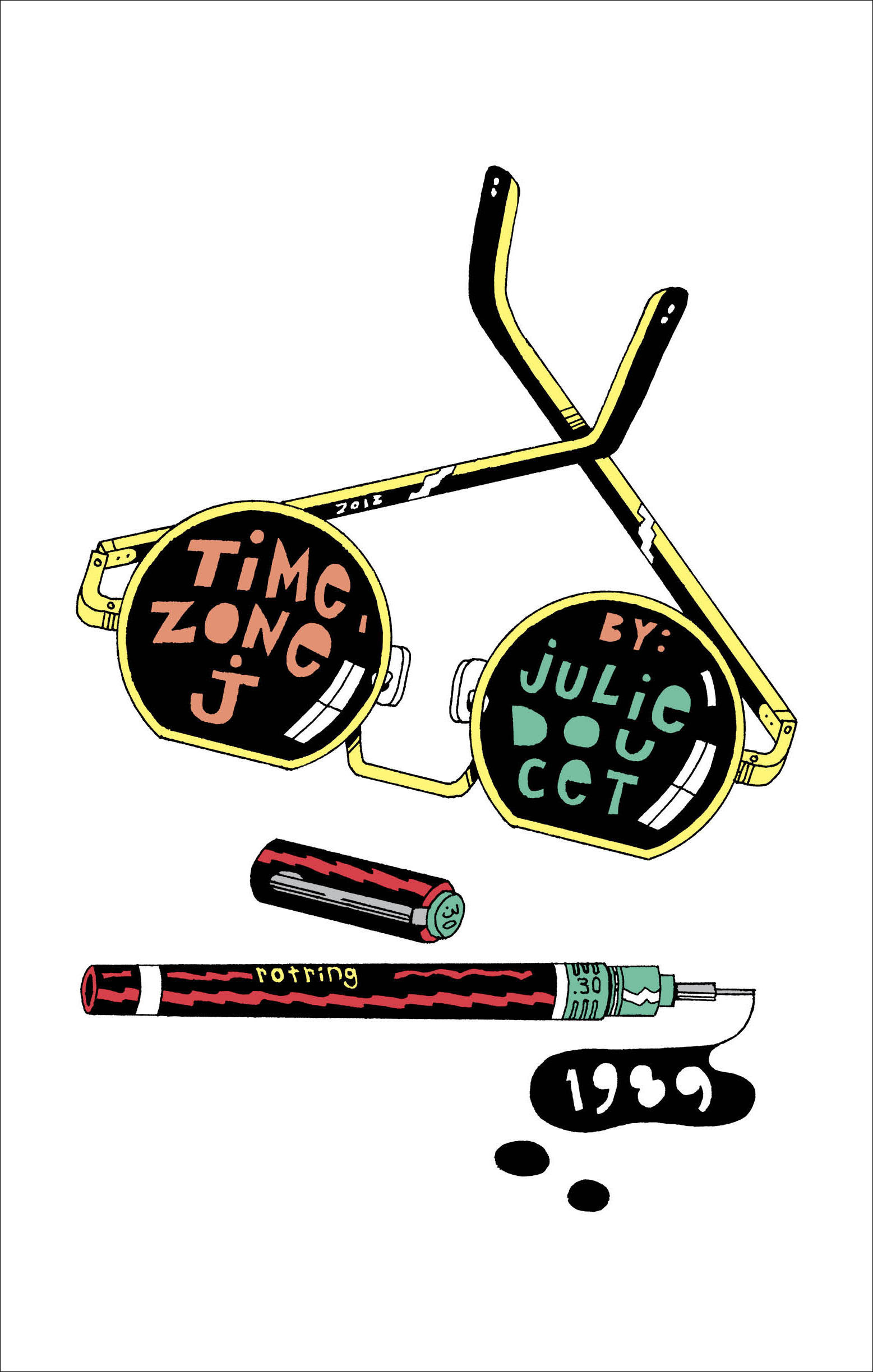 Julie Doucet won the 1991 Harvey Award for Best New Talent and seemingly disappeared from the comics world in 2006. With Time Zone J (Drawn & Quarterly, $29.95), Doucet makes "an intense, electrifying diary-inspired autobiographical" re-entry. She instructs readers, "This book was drawn from bottom to top. Please read accordingly." Every panel-less, borderless page overlaps into the next, so that if the pages could be lined up, long edge to long edge, the effect would be that of a continuous scroll.
Julie Doucet won the 1991 Harvey Award for Best New Talent and seemingly disappeared from the comics world in 2006. With Time Zone J (Drawn & Quarterly, $29.95), Doucet makes "an intense, electrifying diary-inspired autobiographical" re-entry. She instructs readers, "This book was drawn from bottom to top. Please read accordingly." Every panel-less, borderless page overlaps into the next, so that if the pages could be lined up, long edge to long edge, the effect would be that of a continuous scroll.
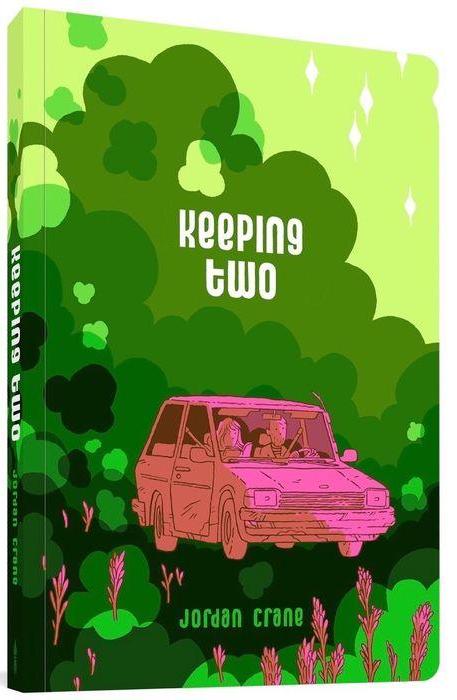 Jordan Crane spent more than two decades creating Keeping Two (Fantagraphics, $29.99), a "magnificently multilayered graphic novel that empathically addresses the universal human fears of losing those most beloved." The events take place over a single evening, as the story introduces, challenges and reconnects lovers Connie and Will. Crane presents his panels--mostly six-on-a-page--in an unusual palette of lime-to-forest green washes over line drawings. Nature, especially plants and trees, is hinted at throughout, culminating in magical woody scenes near the story's end.
Jordan Crane spent more than two decades creating Keeping Two (Fantagraphics, $29.99), a "magnificently multilayered graphic novel that empathically addresses the universal human fears of losing those most beloved." The events take place over a single evening, as the story introduces, challenges and reconnects lovers Connie and Will. Crane presents his panels--mostly six-on-a-page--in an unusual palette of lime-to-forest green washes over line drawings. Nature, especially plants and trees, is hinted at throughout, culminating in magical woody scenes near the story's end.
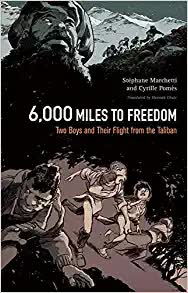 In the "stunning graphic odyssey" 6,000 Miles to Freedom: Two Boys and Their Flight from the Taliban (Graphic Mundi, $26.95), author/director Stéphane Marchetti, adapts the narrative from his 2017 documentary with Thomas Dandois, Les enfans de la jungle, illuminating the wrenching experiences of two refugee boys. Award-winning comics artist Cyrille Pomès infuses every panel with the dynamic motion of their flight, and Hannah Chute, fast becoming a go-to translator of graphic works, deftly enables French-to-English access. The title refers to 12-year-old Adel and his 16-year-old cousin, Shafi, as they escape Afghanistan and journey to the Pakistan/Iran border en route to Europe, Marchetti's urgent text informed by testimonies of refugee youth.
In the "stunning graphic odyssey" 6,000 Miles to Freedom: Two Boys and Their Flight from the Taliban (Graphic Mundi, $26.95), author/director Stéphane Marchetti, adapts the narrative from his 2017 documentary with Thomas Dandois, Les enfans de la jungle, illuminating the wrenching experiences of two refugee boys. Award-winning comics artist Cyrille Pomès infuses every panel with the dynamic motion of their flight, and Hannah Chute, fast becoming a go-to translator of graphic works, deftly enables French-to-English access. The title refers to 12-year-old Adel and his 16-year-old cousin, Shafi, as they escape Afghanistan and journey to the Pakistan/Iran border en route to Europe, Marchetti's urgent text informed by testimonies of refugee youth.
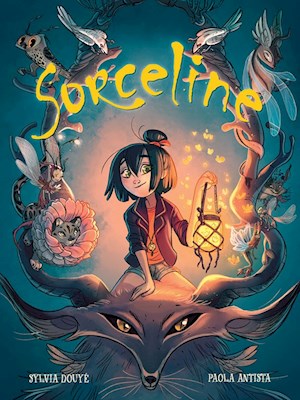 Another standout translation, this one aimed at middle-grade readers, Sorceline (Andrews McMeel, $12.99) is the first English-translated work by Sylvia Douyé, a compilation of three Sorceline graphic novels already published in France. Ivanka Hahnenberger translates the volume, as Sorceline eagerly awaits the first day of her summer apprenticeship studying cryptozoology with Archibald Balzar on the Isle of Vorn. Under Balzar's tutelage, Sorceline will learn all about various cryptids and how to care for them. A classmate's disappearance, though, sets off a chain of bizarre and dangerous mysteries. Paola Antista brings to life this unusual world in a "manga-influenced illustrative style" that depicts cryptids from Roman, Greek, European and Persian mythology and folklore. "Her characters and creatures are expressive and the format features broken, overlapping and asymmetrical panels that help move the plot along at a rapid pace."
Another standout translation, this one aimed at middle-grade readers, Sorceline (Andrews McMeel, $12.99) is the first English-translated work by Sylvia Douyé, a compilation of three Sorceline graphic novels already published in France. Ivanka Hahnenberger translates the volume, as Sorceline eagerly awaits the first day of her summer apprenticeship studying cryptozoology with Archibald Balzar on the Isle of Vorn. Under Balzar's tutelage, Sorceline will learn all about various cryptids and how to care for them. A classmate's disappearance, though, sets off a chain of bizarre and dangerous mysteries. Paola Antista brings to life this unusual world in a "manga-influenced illustrative style" that depicts cryptids from Roman, Greek, European and Persian mythology and folklore. "Her characters and creatures are expressive and the format features broken, overlapping and asymmetrical panels that help move the plot along at a rapid pace."
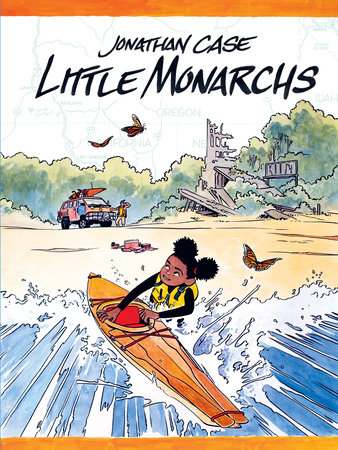 The "prescient, thrilling, unusual and occasionally hilarious graphic novel" (also for middle-graders) Little Monarchs by Jonathan Case (Margaret Ferguson Books, $14.95) uses scrapbook-style content to tell the story of two of Earth's human survivors of a sun shift that causes a fatal sickness in mammals in 2101. Elvie, a plucky 10-year-old, and her wry, brilliant guardian, Flora, follow migrating monarch butterflies along the west coast of the United States. Their vital, life-sustaining purpose is to harvest scales from the butterflies' wings to use in a medicine to prevent sun sickness and--they hope--to develop a vaccine. Case employs a blend of journal entries, maps, diagrams, scientific illustrations, instructions on celestial navigation and hammock-hanging, and tips on foraging and scavenging to allow Elvie to narrate her "strange yet normal daily experience."
The "prescient, thrilling, unusual and occasionally hilarious graphic novel" (also for middle-graders) Little Monarchs by Jonathan Case (Margaret Ferguson Books, $14.95) uses scrapbook-style content to tell the story of two of Earth's human survivors of a sun shift that causes a fatal sickness in mammals in 2101. Elvie, a plucky 10-year-old, and her wry, brilliant guardian, Flora, follow migrating monarch butterflies along the west coast of the United States. Their vital, life-sustaining purpose is to harvest scales from the butterflies' wings to use in a medicine to prevent sun sickness and--they hope--to develop a vaccine. Case employs a blend of journal entries, maps, diagrams, scientific illustrations, instructions on celestial navigation and hammock-hanging, and tips on foraging and scavenging to allow Elvie to narrate her "strange yet normal daily experience."
Book Candy
Book Candy
"A national parks reading list" was compiled by the New York Public Library.
Mental Floss highlighted "10 women writing in the time of Shakespeare."
Let the debates begin: "Books by women that every man should read: chosen by Ian McEwan, Salman Rushdie, Richard Curtis and more," courtesy of the Guardian.
Bookshelf featured a children's bookside table in which each book is actually a pull-out drawer.
Rediscover
Rediscover: American Born Chinese
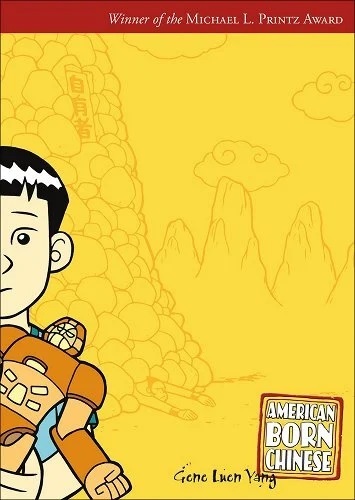 This year is the 16th anniversary of American Born Chinese by Gene Luen Yang, a graphic novel for young readers inspired by Yang's experiences growing up in the United States as the son of Chinese immigrants. It includes three interconnected narratives: the first about a reimagined Monkey King from the 16th century Chinese novel Journey to the West, the second about a child of Chinese immigrants struggling with his identity in a white suburb, with the third story tying the first two together. Yang's book, colored by cartoonist Lark Pien, won the Eisner Award for Best Graphic Album, the American Library Association's Printz Award for best YA book of the year and was a finalist for the National Book Award (sparking controversy over the inclusion of a graphic novel). American Born Chinese, published by First Second, has sold more than 500,000 copies and is often taught in high schools. In 2016, Yang was appointed National Ambassador for Young People's Literature and received a MacArthur Fellowship.
This year is the 16th anniversary of American Born Chinese by Gene Luen Yang, a graphic novel for young readers inspired by Yang's experiences growing up in the United States as the son of Chinese immigrants. It includes three interconnected narratives: the first about a reimagined Monkey King from the 16th century Chinese novel Journey to the West, the second about a child of Chinese immigrants struggling with his identity in a white suburb, with the third story tying the first two together. Yang's book, colored by cartoonist Lark Pien, won the Eisner Award for Best Graphic Album, the American Library Association's Printz Award for best YA book of the year and was a finalist for the National Book Award (sparking controversy over the inclusion of a graphic novel). American Born Chinese, published by First Second, has sold more than 500,000 copies and is often taught in high schools. In 2016, Yang was appointed National Ambassador for Young People's Literature and received a MacArthur Fellowship.
Yang is also the author of Boxers and Saints, a two-volume graphic novel about the Boxer Rebellion in China between 1899 and 1901, during which more than 100,000 people were killed and which led to an invasion by Western countries. He has also written a series of graphic novels called Secret Coders, combining logic puzzles and programming instructions into a story about seventh graders who discover a secret coding school. His other work includes The Eternal Smile, Prime Baby, The Shadow Hero and Dragon Hoops. A television adaptation of American Born Chinese, written by Charles Yu (Interior Chinatown) and Kelvin Yu, finished filming earlier this month and will be available on Disney+. --Tobias Mutter
| Advertisement The Primal of Death Must Be Defeated |


